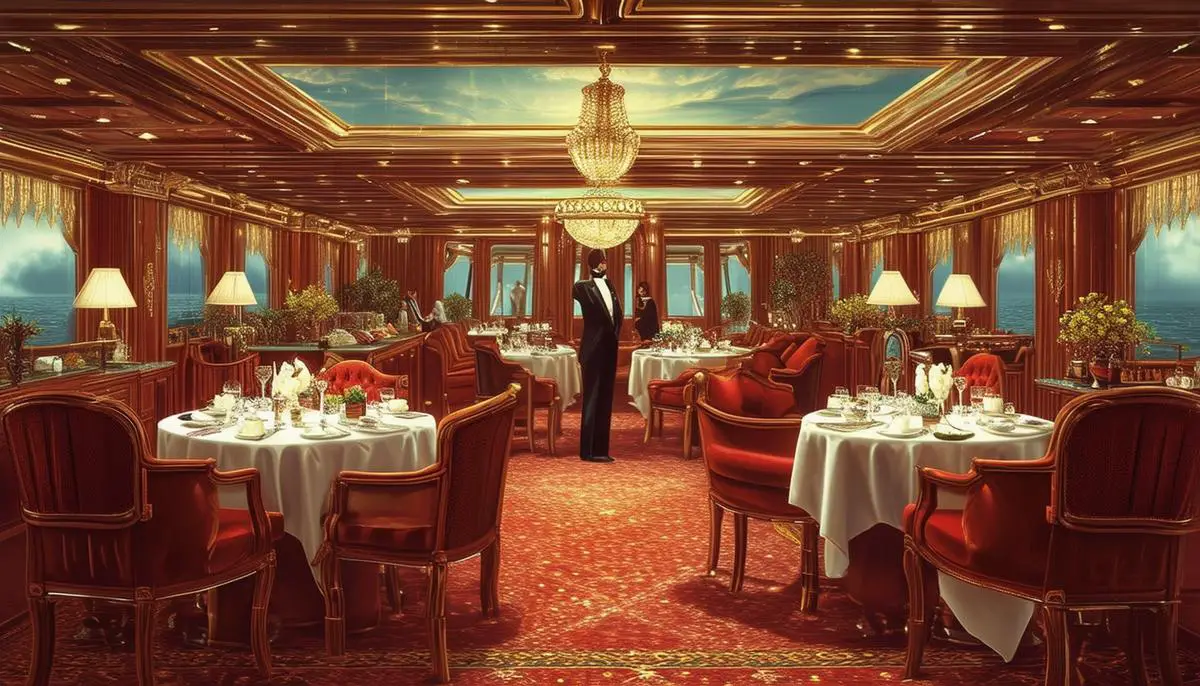Dimensions and Scale
Noah's Ark and the Titanic were built with vastly different dimensions, reflecting the distinct purposes and challenges of their respective eras. The Ark, according to ancient texts, measured about 450 feet long, 75 feet wide, and 45 feet high. These proportions, with a length-to-width ratio of 6:1, prioritized stability in severe floodwaters over speed or efficiency.
In contrast, the Titanic stretched 882 feet long and 92 feet wide, boasting a length-to-width ratio of approximately 9.5:1. This sleeker profile was designed for maritime grace and speed, essential for a commercial liner maintaining schedules between continents. The Titanic II, with a proposed width of nearly 105 feet and a ratio of 8.3:1, aims to improve stability by subtly incorporating wider, more ark-like proportions, acknowledging the merits of a broader hull.
Beyond dimensions, each ship faced unique challenges. The Ark, despite its substantial volume, likely experienced congestion issues due to the need to accommodate numerous animals. The Titanic, while spacious and luxurious, succumbed to an unforeseen vulnerability when it encountered an iceberg, perhaps partly due to overconfidence in its technological prowess.
Design and Functionality
Noah's Ark and the Titanic were designed with drastically different goals, profoundly influencing their architectural blueprints and ultimate fates. The Ark, often described as a survival barge, was intentionally built to withstand a great deluge, with the primary function of safeguarding its occupants. Its 6:1 width-to-length ratio emphasized stability and buoyancy, prioritizing survival above all else.
The Titanic, on the other hand, was a floating palace designed to transport passengers across the Atlantic in luxury and speed. Its 9.5:1 length-to-width ratio reflects this objective, as a narrower beam aids in cutting through the waves more efficiently. The ship's design was influenced not only by functional necessities but also by the pursuit of aesthetic grace and economic optimization associated with rapid transatlantic travel.
The construction methodologies of these vessels further highlight the differences between ancient and modern marvels. The Ark was built using gopher wood and pitch, while the Titanic was constructed with iron and rivets. This contrast demonstrates humanity's evolving material sciences and engineering capabilities, while also highlighting our ongoing struggle to conquer the seas with crafted giants, each with its own inherent vulnerabilities.

Capacity and Livability
Capacity and livability aboard Noah's Ark and the Titanic present a stark contrast between utility for survival and provisioned luxury. The Ark, assuming the burden of 43,000 animals as detailed by traditional accounts, likely had cramped quarters barely extending beyond the space for standing and lying down. With provisions for sustenance and fresh water storage, the conditions on the Ark were likely oppressive, with limited mobility and inevitable discomfort.
The Titanic, designed primarily for luxury travel, boasted extensive amenities that catered to comfort and opulence for its approximately 2,500 passengers and crew. These included:
- Vast dining areas
- Lavish cabins
- Social parlors
- Recreational facilities
However, the ship's design prioritized passenger experience over safety measures, as evidenced by the inadequate number of lifeboats, which ultimately contributed to the tragedy.
Comparing these vessels reveals the Ark's focus on endurance and elemental shelter amidst a catastrophic flood, with little regard for luxury or comfort. In contrast, the Titanic's journey was characterized by the pursuit of luxury and technological advancement, which ultimately proved vulnerable to nature's unpredictability.

The contrasting designs of Noah's Ark and the Titanic reveal essential truths about human ingenuity and its limitations. Each ship, crafted with different intentions and under different circumstances, reflects our ongoing struggle to balance survival, luxury, and safety against the unpredictable forces of nature.
- Collins JC. Noah's Ark and Ancient Shipbuilding. J Creation. 1991;5(2):146-153.
- Hutchings R. Titanic: The Engineering Behind the Tragedy. Engineering Failure Analysis. 2012;19:48-55.
- Woodmorappe J. Noah's Ark: A Feasibility Study. Santee, CA: Institute for Creation Research; 1996.
